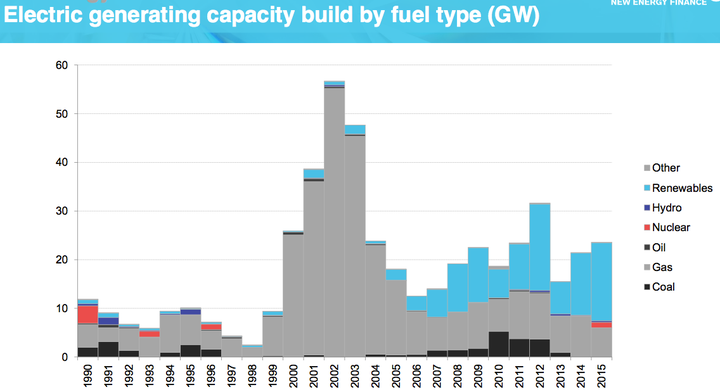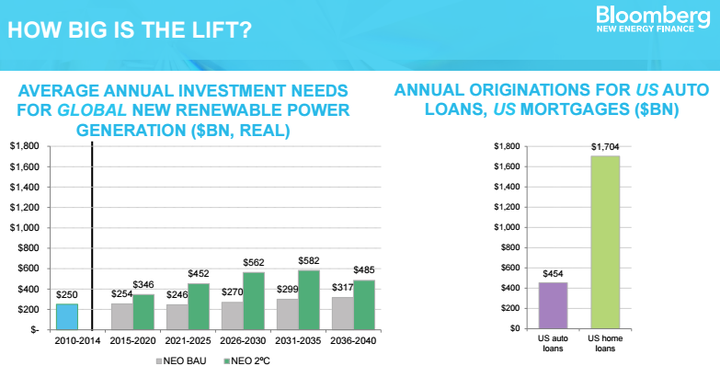
The United States has to reduce greenhouse emissions to less than a quarter of what they were in 2005 to meet its commitment under the Paris climate agreement.
Getting to that goal will depend on a huge number of factors, but a new report from Bloomberg New Energy Finance shows renewables are a large, and growing, majority of energy projects in the U.S., and that the American economy is getting more and more energy efficient. The report also found that the incremental amount of investment needed every year over the next 15 years to keep the U.S. and the rest of the globe below 2 degrees Celsius of warming is less than the current annual volume of U.S. auto loans. In other words, completely manageable.
First, here's new U.S. electricity capacity by type. Renewables made up 68 percent of new projects in 2015.

Second, the long-term trend is that the U.S. economy is less and less a machine that ingests oil and coal and spits out GDP. In fact, as the chart below shows, the U.S. economic growth and energy use have been decoupled since about the mid-1990s. Part of that is the shift away from manufacturing, and there is noise in the year-to-year trends (especially on a global level, where emissions fell in 2015 but have probably not peaked). But the path for the U.S. is clear and has been for more than a decade: emissions and the economy don't necessarily move together.
For instance, Bloomberg pointed out that energy demand "flatlined in the U.S. last year, holding steady even as the gross domestic product grew 2.4 percent, BNEF said. Since 2007, U.S. energy consumption has dropped 2.4 percent while GDP has grown by 10 percent."

And then there's the money. This chart shows how much incremental investment in renewable energy the world -- not just the U.S. -- needs by 2040. The answer is not that much in context: it's in the ballpark of the total annual amount of U.S. auto loans.

Of course, there is still a multitrillion-dollar clean energy investment gap that we must close. But most of that money will come from shifting current spending on fossil fuel infrastructure toward clean energy. This chart shows that, in context, the amount of money we need to spend over and above what we are already spending is just not that much.
